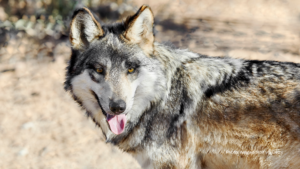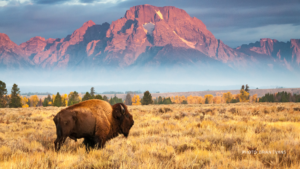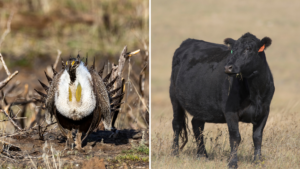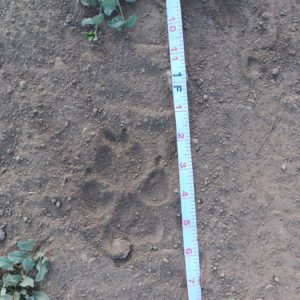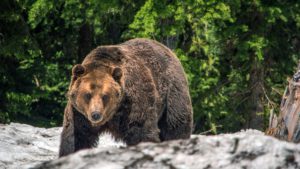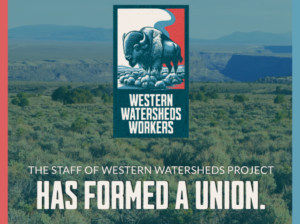The Sagebrush Habitat Conservation Fund Marks a New Milestone for Voluntary Conservation

by Debra Ellers (Taken from the Fall 2010 Watersheds Messenger)
Western Watersheds Project (WWP) ventured in a new direction with an agreement reached with Ruby Pipeline LLC, (“Ruby”), a subsidiary of natural gas energy company El Paso Corporation. This agreement, which was effective June 29, 2010, ended WWP’s opposition to Ruby’s proposed 676.5 mile buried natural gas pipeline. With the pipeline’s route starting in Opal, WY, running west through northern Utah and Nevada, and ending in Malin OR, it connects the producing areas of Wyoming with West Coast energy consumers. Construction on the pipeline started in late July, 2010, with completion planned for Spring, 2011.
In exchange for WWP agreeing not to delay or litigate over the pipeline, Ruby agreed to pay $15 million over ten years into a separate fund, the Sagebrush Habitat Conservation Fund (the “Fund”). The Fund’s mission is to engage in voluntary conservation of sage-steppe habitat by such methods as funding grazing permit retirements, acquiring conservation easements or base properties, all strictly on a willing buyer-willing seller basis. Essentially, the Fund is envisioned as mitigation to lessen the pipeline’s impact on sagebrush habitat and sensitive sage-obligate species such as sage grouse, pygmy rabbit and pronghorn antelope.
The Fund is organized as a separate, non-profit corporation under Idaho law. Three directors manage the Fund–one appointed by WWP, one by Ruby and the third mutually agreed upon by the other two directors. In the first five years of existence, the Fund’s focus is on conservation and mitigation efforts in the counties in the vicinity of the Pipeline’s route. However, the Fund is not required to take any measures in any particular county.
After five years, the Fund may seek permit buyouts or other voluntary conservation methods anywhere in the American West with sagebrush habitat. Up to $1.5 million of the Fund is reserved for federal grazing permit buyouts or other conservation measures in the Greater Hart Mountain-Sheldon National Wildlife Refuge area of Eastern Oregon and Northern Nevada. (Furthering the conservation opportunities to protect and restore the Greater Hart Mountain-Sheldon ecosystem, Ruby and the Oregon Natural Desert Association, WWP’s sister organization, entered into a similar agreement for an additional $7 million fund known as the Greater Hart-Sheldon Conservation Fund).
Significantly, the money from the Fund can’t be used as a war chest for WWP. Funds must go directly to the Fund in support of its conservation mission, not to WWP. Moreover, the Fund is prohibited from prosecuting litigation to accomplish its goals.
With the Fund in start-up mode, one of the its first steps is putting together a strategy plan for conservation priorities, with the focus expected to be on habitat that offers high value for wildlife. An example might be a large allotment with key sage grouse mating and chick-rearing grounds, which a permittee is willing to voluntarily retire in return for compensation. Another initial step is to develop an Advisory Panel who share the Fund’s voluntary conservation goals and have expertise in science, agency regulations, industry background or other areas that can assist the Fund.
A voluntary, free market approach to conservation would typically seem uncontroversial regardless of one’s political or ecological perspective. However, a frenzy erupted after the Fund agreement was announced. County commissioners in places such as Elko County, Nevada and Lincoln County, Wyoming held public events denouncing the deal as the death knell for public lands grazing. (This despite economic statistics showing the pipeline would bring many jobs, tax revenues, and money to the area while agricultural jobs and revenues make up a minimal percentage of these counties’ economic base).
Environmental blogs raged with debates about whether WWP was “selling out.” This blogging battle and unsubstantiated speculation from all sides of the spectrum brought to mind various Shakespearean phrases, such as the one from Hamlet’s soliloquy “full of sound and fury, signifying nothing” or the title of the play “Much Ado About Nothing.”
The reality is that voluntary grazing permit buyouts have been used successfully in many areas to remove conflicts between livestock grazing and other values such as conservation or recreation. Examples of past successful permit retirements include buyouts in the Cascade-Siskiyou National Monument, Great Basin National Park, the Mojave National Preserve, and in a number of National Forests around Yellowstone and Grand Teton National Parks.
In Idaho, through federal legislation sponsored by Senator Mike Crapo, allotments wholly or partially within the Owyhee Wilderness Areas are eligible for statutory retirements. The proposed Central Idaho Economic Development and Recreation Act, which has been spearheaded by Congressman Mike Simpson of Idaho, would designate wilderness areas in the Boulder-White Clouds and create a voluntary grazing permit waiver and retirement program for allotments in those areas.
As those familiar with permit buyouts know, one of the main concerns associated with federal grazing retirements is that, absent congressional statutory authorization, permanency is not guaranteed. In the absence of congressional authorization for retirement, waiver of the permit back to the federal land management agency (typically, the BLM, Forest Service or U.S. Fish and Wildlife Service) is subject to that agency’s resource or land management plan. These plans vary widely in such aspects as how long conservation non-use of a grazing permit can occur, how the agency administers waivers, and other pitfalls that can jeopardize the permanency of permit retirements. Consequently, to ensure that permit retirements would be assured, the Fund agreed to seek statutory authorization consistent with its mission.
Entering into this agreement was subject to much thoughtful debate and soul-searching among WWP board and staff. The pipeline is expected to disturb about 14,000 acres during the course of construction. After its underground installation, the pipeline will continue to have impacts from roads, pumping stations and associated maintenance. It was tough for dedicated conservationists to accept this disturbance, some of which is in previously intact sage-steppe habitat. But in the end, WWP’s board decided that the Fund’s potential benefits of protecting and restoring many more acres for wildlife outweighed the environmental trade-offs associated with the pipeline.
After two decades of working to conserve native wildlife and wildlands, I accepted this new assignment for WWP as its appointed director of the Sagebrush Habitat Conservation Fund with the hope of bringing increased emphasis on conservation values to public lands’ management in the West. My goal is for the Fund to be a demonstration project on how conservationists and industry can work together in ways that will both enhance wildlife habitat on public lands, and give permit or property owners a voluntary incentive for changing their operations to benefit wildlife. Whatever the outcome, based on the Fund’s first few months, the experience is sure to be interesting and challenging.

